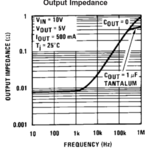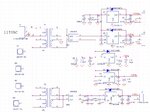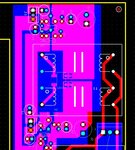Alan8947
Full Member level 4
Hi
I am looking into using these old regulators. My main concern is the maximum value of capacitor that can be used at the input and output. Datasheet of ON-Semi gave the minimum value. eg. 0.33uF at the input if the input trace is long. Suggest using like a 1uF at the output for stability purpose.
I understand I need to put 0.1uF ceremic bypass as close to the input and output as possible to give good bypass for stability. My question is whether it will present a problem if I use a lot more capacitance. eg, using 1000uF at the input to filter out all the ripple of the bridge rectifier after the transformer. I want to use like 1000uF at the output also( of cause with 0.1uF ceramic cap in parallel to take care of the RF).
Thanks
I am looking into using these old regulators. My main concern is the maximum value of capacitor that can be used at the input and output. Datasheet of ON-Semi gave the minimum value. eg. 0.33uF at the input if the input trace is long. Suggest using like a 1uF at the output for stability purpose.
I understand I need to put 0.1uF ceremic bypass as close to the input and output as possible to give good bypass for stability. My question is whether it will present a problem if I use a lot more capacitance. eg, using 1000uF at the input to filter out all the ripple of the bridge rectifier after the transformer. I want to use like 1000uF at the output also( of cause with 0.1uF ceramic cap in parallel to take care of the RF).
Thanks


